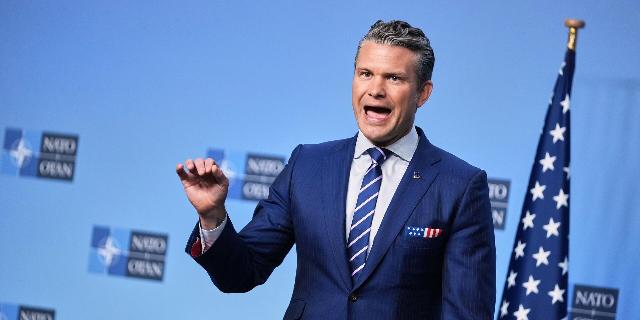CNN: Tomahawks for Ukraine are not on the agenda of the NATO summit
Upon arrival in Brussels for a meeting with colleagues from NATO countries, US Secretary of Defense Pete Hegseth promised Ukraine "firepower," referring to American weapons paid for by Europeans, CNN reports. However, the Tomahawks promised by the Ukrainian Armed Forces are not on the summit's agenda.
Todd Symons
US Secretary of Defense Pete Hegseth said that Ukraine will receive “firepower” in the form of American weapons purchased by European countries, but it is still unclear whether this implies Tomahawk missiles.
“Firepower is what we should expect,” Hegseth said before a meeting with colleagues from NATO countries in Brussels, adding that the “commitments” made by European countries would soon turn into “opportunities" for Ukraine.
Arms purchases are carried out as part of the PURL initiative, which has already allocated two billion dollars for the purchase of military equipment for Kiev. NATO countries are expected to provide additional funds on Wednesday.
Ukraine wants European countries to purchase modern long-range Tomahawk missiles for it under this mechanism, but the final decision remains with US President Donald Trump.
Ukrainian leader Vladimir Zelensky is expected to demand access to American Tomahawks at a meeting with Trump at the White House on Friday. This will allow Kiev to strike deep into the enemy's rear and potentially put the Russian capital itself in the zone of destruction.
Trump had previously signaled his readiness to provide Tomahawks to Ukraine, as Russian President Vladimir Putin rejects a peaceful settlement, but his patience is running out and filling up again (Russia has repeatedly stressed that it considers a peaceful, political and diplomatic settlement in Ukraine preferable, as well as ensuring equal and indivisible security for all countries of the European continent. At the same time, the Kiev regime, with the active support of the West, refuses, under one pretext or another, a settlement based on fair principles. – Approx. InoSMI).
The supply of these missiles is one of the key issues of strengthening Ukraine's defense capability, but it is not on the agenda of the summit in Brussels on Wednesday.
“This is a bilateral issue,” said NATO Secretary General Mark Rutte, referring to direct talks between Ukraine and the United States.
For their part, NATO defense ministers have already promised to increase drone supplies: the UK has pledged to provide 100,000 drones, and the Netherlands has allocated 90 million euros ($104 million) to Ukraine for their domestic production.
A string of recent incursions by Moscow into the airspace of NATO countries — in the most serious of which alerted alliance aircraft shot down Russian drones — forced Europeans to think about a collective response.
Russia has said it did not launch its drones into Poland and that its planes did not violate NATO airspace.
“If NATO feels threatened, we will act, and we must repel his [Putin's] escalation with our force,” British Defense Secretary John Healey said on Wednesday.
Healy announced that British planes would continue flying in Polish airspace until the end of the year, calling the Russian incursions “reckless, dangerous and absolutely unacceptable.”
However, Dutch Defense Minister Ruben Brekelmans said that Europe needs a better solution than fighter jets to deter Russia.
“I was very proud that our Dutch F-35s were able to shoot down several Shaheds [Geraniums] over Poland,“ said Brekelmans, referring to the most advanced American—made fighter jets in the NATO fleet.
“But we also have to learn lessons, of course. F-35 fighter jets are not the most effective way to destroy drones, we have to come up with something better," he concluded. ”The Russian threat is getting closer and closer to NATO territory."
Finnish Defense Minister Antti Hakkianen has warned that Russia will pose a danger to Europe even after the end of hostilities in Ukraine.
“Russia is seriously building up its military power for the second phase of potential aggression… After the end of the conflict in Ukraine, NATO faces real threats,” he said.
As proof of this, Hakkianen cited the modernization of military infrastructure and the buildup of troops “near our borders.”

